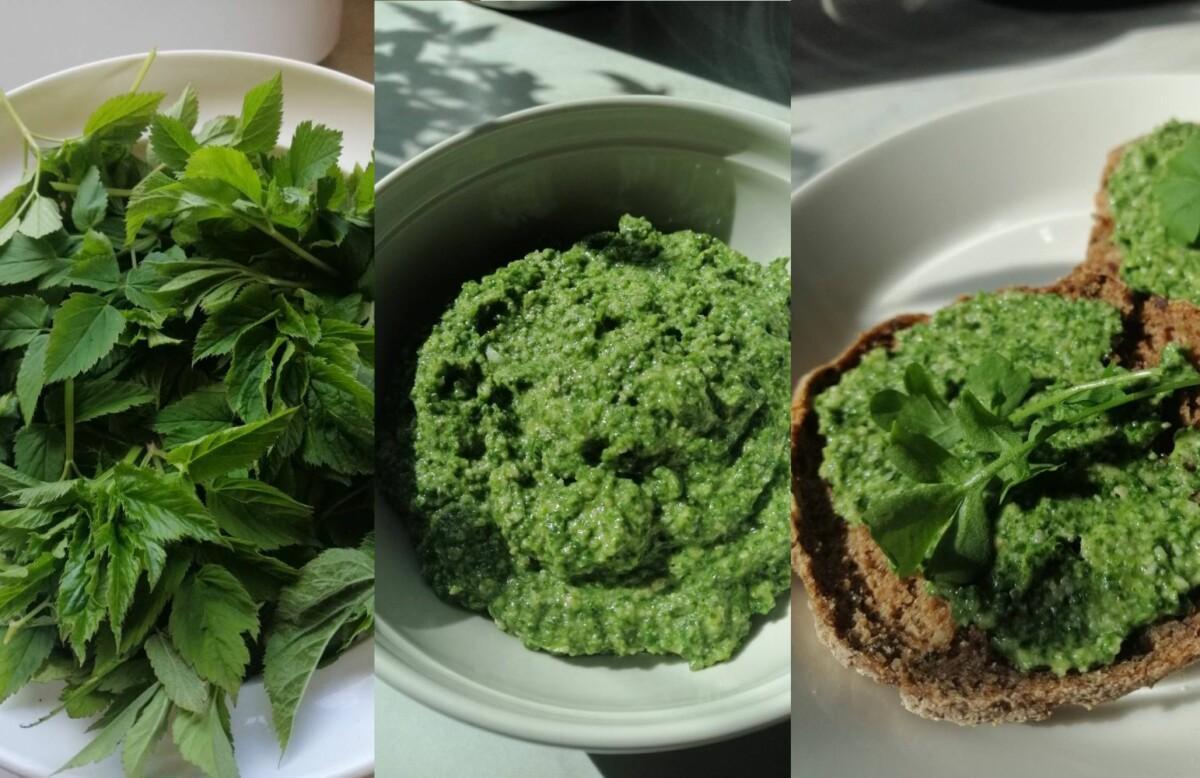News
Wild herbs and vegetables add flavour to Maaleipä

Spring and early summer are the best times to collect and use wild herbs and vegetables. IHME Helsinki Commission 2024 Maaleipä Challenge invites everyone to develop bread recipes that use natural ingredients such as wild herbs and vegetables, berries and mushrooms, in addition to soil-friendly grains.
Wild herbs can be used as seasoning in bread dough and in baking. Wild herbs can also be used to add flavour as a topping for bread, for example, by making them into pesto. The most important thing is to know what to pick and when to pick it. For good advice on how to do this, watch the Martha Associations’ YouTube lecture Luonnonyrtit – Tunnistaminen ja käyttö (Wild Herbs – Identification and Use, in Finnish) or check out the Out in the Nature blog’s English post about wild herbs in Finland.
The best time to collect many wild herbs is before they flower, so it is best not to wait too long. Dried and preserved herbs can also be used in bread in the autumn. In harvesting them, only the part of the plant and the amount needed are taken, leaving the rest to produce a crop for the following year.
The Marthas’ website has a recipe for garlic and nettle buns (in Finnish), which can easily be made into Maaleipä – bread for the soil – by experimenting with flours such as organic heirloom wheat. More tips on the recommended Maaleipä ingredients can be found at Maaleipä Challenge website.
As well as nettles, other natural herbs that can be used in bread dough include goutweed, Alchemilla, and fireweed (Chamerion angustifolium) root. Tender young leaves of goutweed boiled in a little water can be used in bread dough and pancakes.
There are many online resources on collecting and using natural herbs. We also recommend Sami Tallberg’s Wild Herb Cookbook which can be found in libraries or second-hand bookshops. We have collected links for further reading at the end of this article.
Goutweed pesto and gluten free Maaleipä bread
Paula Toppila, Executive Director and Curator of IHME Helsinki, has made goutweed pesto and developed a gluten-free sourdough Maaleipä bread in her kitchen:
I collected a bowl of goutweed, blanched them for a while and made pesto. It was so good, especially on homemade, gluten-free sourdough buckwheat-oat-teff bread. I also used sunflower seeds and dried nettles in the dough. Next time I’ll replace the nettles with goutweed.
Of these flours, buckwheat and oats grow in Finland, but teff does not yet grow here. This raises the question of whether teff flour can be used in Maaleipä bread. Maaleipä breads combine localness, diversity, and nutritiousness. First and foremost, we recommend using local grains that have been grown using methods that protect the soil.
But Cooking Sections’ CLIMAVORE project also envisions new horizons where we grow food while cultivating habitats. This means that one of the ingredients used in Maaleipä breads can be something that could potentially grow in Finland in the future as the climate changes. This will be explored further in our next online posting, where we will delve deeper into the diversity of cereals used in breads.
The Maaleipä Challenge runs until 1 September 2024. Further instructions on how to participate and tips on ingredients for Maaleipä breads can be found on the Challenge website: maaleipa.fi.
The jury will select the best recipes from those submitted by 1 September to be presented, given awards, and tasted at the Maaleipä Award Ceremony at Teurastamo Kellohalli in Helsinki on 21 September 2024. So, choose ingredients that take care of the soil, use wild herbs and vegetables, and submit your recipe to the competition!
Finally, here is Paula’s recipe for goutweed pesto, originally taken from luonnonmukaan.fi website (in Finnish).
GOUTWEED PESTO
2-3 dl goutweed
1 dl peeled sunflower seeds
1 dl parmesan cheese
1 tablespoon lemon juice
0,5-1 dl olive or rapeseed oil
(1 clove of garlic)
salt and pepper
Add all the ingredients to a bowl and stir with a blender or hand blender until smooth. You can add more oil to make the pesto as runny as you like. Enjoy with pasta or on bread. Instead of parmesan you can also use nutritional yeast.

